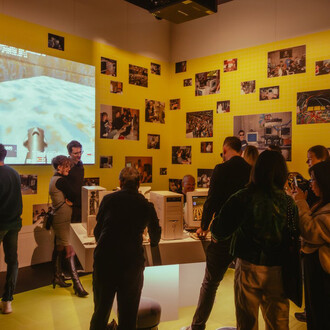William Breen is a painter of light. Building movement, atmosphere and colour through soft veils of oil, Breen cements his position as a contemporary master painter.
Via a deliberate and dedicated approach to his practice, Breen transcends the purely representational, commanding more from his craft than simply imitating life. Infused into his scenes is an intensity rarely experienced when standing before a realist piece. Here is a coming together of incredible clarity and a hyper-real handling of composition and form, teamed with Turner-esque emotion embedded within stormy skies and glistening seas.
Of course it is easy to draw comparison to this other famous William. Moving into the realm of Impressionism 19th Century master painter William Turner translated his journeys and experiences into images of pure immersion – lashings of colour and purposeful brushstrokes enabled his audiences to be transported by his creations. Although Breen has perhaps a more considered way of painting, the same sense of awe is felt when admiring his tableaus. Elevating what lies before him into a sensory realm, his works act as portals into the memory of a place rather than being preoccupied with the exclusively observational.
Breen’s practice has always been divided between documenting streetscapes and more traditional landscapes - where his urban settings possess a still timelessness, presented with a hazy, limited palette and a suburban romantic nostalgia, his landscapes are acute and rich.
This latest exhibition, After The Storm, celebrates his landscape works. Created over the past year, the artist has captured the essence of the places that he travels to. His coastal pieces are a homage to the area around the small Victorian seaside town of Blairgowrie. Seething with holiday makers in the summertime, Breen experiences these beaches in the off season, when the sand and the sky are his alone to absorb. In each of these works, he captures the soul of an experience in a way that could never be achieved by taking a snapshot on a smartphone. Where lenses would struggle capturing the light, subtle colours and shifting forms, Breen does them justice through paint and brush.
With dancing shafts of light and glints of a setting sun through recently turbulent clouds, these coastal skies are euphoric and theatrical. In contrast, the soft, damp expanses in his rural works, inspired by the artist’s frequent trips to Yarra Glen, feel immersive, calm and quiet. The winding provincial roads and views over verdant pastures are at once contemplative and emotive, allowing the viewer to lose themselves within the gentle, undulating hills.
While navigating through our most intimate and ordinary dilemmas, art can provide a place of solace and contemplation, and it is when admiring nature that we can become attuned with our psychological frailties. Perhaps Breen’s After The Storm is a consideration of this also. By admiring and feeling connected with our natural world, we can slowly overcome the challenges of everyday life.
Flinders Lane Gallery first exhibited William Breen’s paintings in 2000. He graduated from the Victorian College of the Arts in 1992. Breen has been a finalist in the Arthur Guy Memorial Prize, Tattersalls Art Prize, Doug Moran Portrait Prize, the Brett Whiteley Scholarship, the Redlands Westpac Art Award, the Geelong Art Prize and the Nillumbik Art Prize, the Conrad Jupiter Art Prize, as well as a finalist in the John Leslie Art Prize. Breen has been shortlisted for the prestigious Wynne Prize at the Art Gallery of New South Wales, and the Fleurieu Peninsula Biennale Art Prize.
He is represented in corporate and private art collections in Australia, the United States, and the United Kingdom including the RACV Collection, Macquarie Bank, Bendigo Art Gallery, Gippsland Art Gallery, Deakin University, Artbank, City of Perth, National Australia Bank, LaTrobe University Melbourne, Loyola College, Melbourne and the City of Whitehorse Collection.
Catalogue essay by Melanie Caple, BArts (FA) MArts 2017.
















